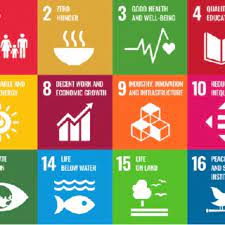This essay examines the essential components and tactics needed to create sustainable city economies and focuses on their advantages. As nations struggle with the pressing need to solve environmental concerns and create a resilient future, sustainability has gained much attention in recent years. Making urban areas sustainable centers of economic activity is essential to this goal. Cities may lessen their environmental impact, promote social justice, and enhance the quality of life for their citizens by adopting sustainable policies.
Advantages of Sustainable City Economies: Environmental, Economic, and Social Benefits

Sustainable city economies are built on environmental stewardship, social inclusivity, and economic vitality. They aim to minimize resource consumption, reduce emissions, and enhance efficiency while promoting equitable economic development. These economies prioritize renewable energy, efficient transportation systems, green infrastructure, waste management, and sustainable urban planning to create a harmonious balance between economic growth and environmental preservation.
The Benefits of Sustainable City Economies:
Environmental Benefits: By embracing sustainable practices, cities can significantly reduce their carbon footprint and mitigate the impacts of climate change. Investments in renewable energy infrastructure, energy-efficient buildings, and public transportation systems can substantially reduce greenhouse gas emissions. Furthermore, sustainable city economies emphasize preserving and restoring natural ecosystems, enhancing biodiversity and ecosystem services.
Economic Benefits: Sustainable city economies can spur economic growth and job creation. Investments in renewable energy, clean technologies, and energy-efficient infrastructure stimulate innovation, attract green businesses, and generate employment opportunities in emerging sectors. Additionally, energy and resource efficiency measures help reduce operational costs for businesses and households, leading to substantial savings and increased disposable income for residents.
Social Benefits: A sustainable city economy fosters social inclusivity and improved quality of life for its residents. By prioritizing affordable housing, accessible public transportation, and green spaces, cities can enhance social equity and reduce disparities. Sustainable urban planning strategies that promote mixed-use developments and walkable neighborhoods create vibrant communities where people can live, work, and play.
Critical Strategies for Building Sustainable City Economies:
Effective urban planning and design are crucial in creating sustainable city economies. Compact, mixed-use developments reduce sprawl and promote efficient land use, reducing the need for long commutes and associated carbon emissions. Additionally, incorporating green spaces, parks, and recreational areas enhances urban residents’ livability and well-being.
Cities can accelerate the shift towards renewable energy by investing in solar, wind, and hydroelectric power. Encouraging the installation of solar panels on rooftops, implementing community solar programs, and developing renewable energy microgrids can help cities achieve energy independence and reduce reliance on fossil fuels. Furthermore, incentivizing energy-efficient building design and retrofitting existing structures can significantly decrease energy demand.
Sustainable City Economies
Promoting sustainable modes of transportation, such as walking, cycling, and public transit, is vital for reducing congestion, air pollution, and carbon emissions. Cities can invest in pedestrian-friendly infrastructure, dedicated cycling lanes, and efficient public transit networks. The electrification of public transportation and the promotion of electric vehicle adoption also contribute to a cleaner and more sustainable urban transportation system.
Cities can adopt a circular economy approach by implementing comprehensive waste management systems. Emphasizing waste reduction, recycling, composting, and resource recovery initiatives minimizes landfill waste, conserves resources, and reduces environmental pollution. Encouraging sustainable consumption patterns and supporting local businesses prioritizing eco-friendly practices further, strengthen the circular economy model.
Case Studies: Exemplary Sustainable City Economies:
Copenhagen, Denmark: Copenhagen has become a global leader in sustainability by setting ambitious carbon neutrality targets and implementing various initiatives. The city heavily invests in cycling infrastructure, achieving a high percentage of daily bicycle commuters. Copenhagen’s commitment to renewable energy and sustainable urban planning has created a vibrant and livable city with a thriving green economy.
Curitiba, Brazil: Curitiba is renowned for its integrated public transportation system, which includes dedicated bus lanes and innovative bus rapid transit (BRT) systems. The city’s emphasis on preserving green spaces and creating pedestrian-friendly areas has contributed to its reputation as an environmentally conscious and socially inclusive urban center.
In conclusion, building sustainable city economies is imperative for addressing climate change, resource scarcity, and social inequality. By embracing environmentally sound practices, cities can pave the way for a greener future while unlocking economic opportunities and improving the well-being of their residents. Through strategic urban planning, renewable energy adoption, sustainable transportation systems, and circular economy principles, cities can become beacons of sustainability, inspiring others to follow suit. Policymakers, businesses, and communities must collaborate and invest in sustainable city economies to ensure future generations’ prosperous and resilient futures.
References for Sustainable City Economies
C40.org. (2019). C40. [online] Available at: https://www.c40.org/.
iclei.org. (n.d.). ICLEI. [online] Available at: https://iclei.org/.
United Nations (2022). Goal 11: Make cities inclusive, safe, resilient, and sustainable. [online] United Nations Sustainable Development. Available at: https://www.un.org/sustainabledevelopment/cities/.
World Bank. (n.d.). Topics. [online] Available at: https://www.worldbank.org/en/topic/urbandevelopment/brief/sustainable-cities





